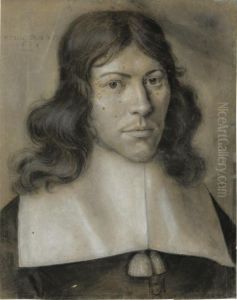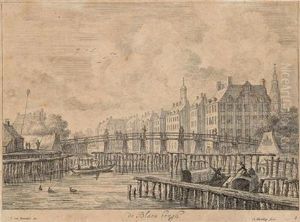Abraham Bloteling Blooteling Paintings
Abraham Bloteling, also known as Abraham Blooteling or Blotelingh, was a distinguished Dutch engraver and printmaker born around 1640 in Amsterdam, Netherlands. His contributions to art, particularly in the realm of engraving, placed him among the notable figures of the Dutch Golden Age, a period characterized by remarkable achievements in arts, sciences, and trade.
Bloteling likely received his initial training in Amsterdam, a vibrant center for the arts during the 17th century. He is noted for his mastery in mezzotint, a printmaking process that allows for the creation of images with subtle gradations of tone. This technique was relatively new at the time and had been invented by the German artist Ludwig von Siegen. Bloteling was instrumental in popularizing mezzotint in the Netherlands and beyond, contributing significantly to its development and refinement.
Throughout his career, Bloteling worked on reproductions of works by renowned artists of his time, such as Rembrandt van Rijn, Peter Paul Rubens, and Anthony van Dyck, thus playing a crucial role in disseminating their artworks across Europe. His ability to capture the essence and detail of original paintings in his engravings earned him acclaim and demand among art collectors and connoisseurs. Bloteling's portfolio is diverse, encompassing portraits, landscapes, and biblical as well as mythological scenes, reflecting the wide-ranging interests of the Baroque period.
In addition to his work in the Netherlands, Bloteling spent a portion of his career in England, where he was active in the court of King Charles II. His time in England, from about 1672 to 1678, was marked by significant achievements, including engravings after works by Sir Peter Lely, the court painter. Bloteling's engravings were not only artistic achievements but also important historical documents that offer insights into the cultural and social dimensions of his era.
Abraham Bloteling's death in 1690 marked the end of a prolific career that had a lasting impact on the field of printmaking. His legacy is preserved in the collections of major museums and galleries worldwide, where his works continue to be studied and appreciated for their technical skill and artistic beauty. Bloteling's contributions to the art of engraving, particularly his advancements in mezzotint, remain a significant part of the history of European art.

